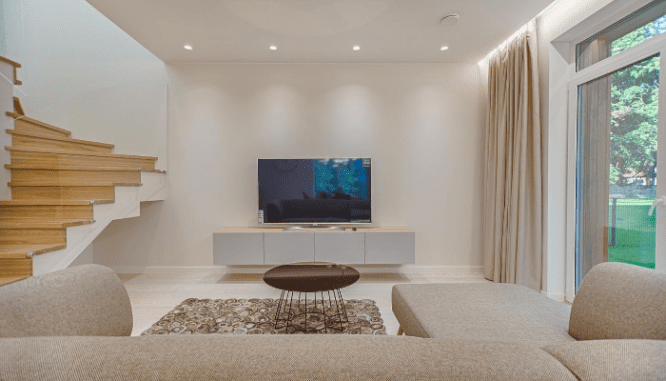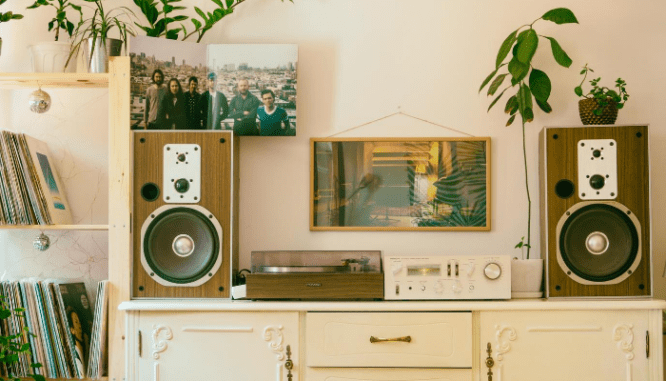Best Laid Floor Plans: Arranging Furniture In Your New Home
- Published on
- 5 min read
-
 Melissa Holtje Contributing AuthorClose
Melissa Holtje Contributing AuthorClose Melissa Holtje Contributing Author
Melissa Holtje Contributing AuthorMelissa enjoys using her experience as a house flipper, investment buyer, and waterfront home owner to help buyers and sellers thrive in the housing market. When not scouting real estate, you’ll most likely find her at the beach.
Moving into a new home is an exciting new adventure, but it can also feel like a never-ending list of decisions. After settling on a closing date, an insurance policy, and a moving company, even fun decisions — like furniture placement — can make you feel fatigued.
To help make those furniture arrangement details a bit easier, we pulled together expert interior decorating tips and talked with top California real estate agents Andrew Oldham and Sri Shankar, who both have an eye for highlighting a property’s features. These combined pro tips can help you optimize the setup of each room to make it instantly feel like home.

Lay it out first
Let’s face it — furniture is heavy. Rather than using the “pivot!” strategy, make a mock-up of your rooms first. Your muscles will thank you later!
A simple drawing on graph paper can get you started. Or try an online floor planner like Planner5D or RoomStyler3D for more precision.
As a starting point, consider how the previous owners (or stagers) had things arranged.
Oldham knows the amount of thought and effort that real estate agents put into making their homes look sharp. “We want to convey a certain amount of energy within a house,” he says.
Take a look at your new home’s listing photos when arranging your furniture and mimic the aspects that you like.
Choose a focal point
A focal point is exactly what it sounds like — a point in the room that would naturally draw the focus of its occupants.
“One of the main focal points in a living room is a fireplace,” Shankar says. Other focal points may be a large window, a piano corner, or an entertainment center.
Once you’ve established your focal point, arrange the furniture so that all seating has a full or partial view of that point.
For the sake of balance and flow, not all seats will face directly toward the focal point, but each seat should be situated with at least a potential for viewing.
Work around the flow
Shankar, who has a background in interior design, says: “A room needs to be spacious and have a good flow so people can see how one room works with another.”
Flow refers to the usability of the furniture arrangement. A good flow allows for natural traffic patterns and does not require guests to take abnormal routes to seating areas.
Flow acknowledges the need for function over form, especially in casual living spaces. When establishing flow, interior designers generally try to leave at least 30 inches around furniture. Any less will feel too tight to be used as a walkway and could potentially create an unnatural flow.

Create balance
Most often we think of balance in terms of weight. Justice scales, balance boards, and balance beams all call to mind images that rely on an equalizing of weights.
In interior design, balance also refers to weight. Balance brings visual calm; an unbalanced room brings visual confusion. The weightiness or bulk of furniture pieces must be spread throughout the room to achieve proper balance.
Empty space (no weight) on one side of the room contrasted by over-filled space (too much weight) on the other side of the room can throw off the balance.
Balance does not necessarily mean symmetry, however. A large piece (such as a sectional) can be offset by two smaller ones (like two armchairs). The sizes and shapes are not symmetrical, but their visual weight achieves balance.
It’s also wise to balance colors and patterns. If you have a colorful accent chair on one side of the room, you may want to consider adding colorful throw pillows on the other side of the room.
Arrange specific zones in open spaces
While arranging furniture around the main focal point is important, sometimes a larger open space may require some additional definition. Open-concept floorplans can be broken up into more usable spaces by creating specific zones for different purposes.
For example, you may want to use a small table and chairs to create a game space or put a comfortable chair next to a large bookcase for a library area. Semi-circle furniture layouts create natural conversation zones for fellowship — today’s answer to the “sitting rooms” of years past.
Whatever zones you choose, make sure you don’t orphan any piece of furniture by following the “every seat gets a buddy” rule of interior design. A chair or table left by itself will never be used; without a “buddy” its function diminishes.

Leave space
As a new homebuyer, it’s tempting to feel like you have to use all the furniture pieces that you brought with you. After all, you went to the trouble of moving it, so you might as well use it, right?
In reality, a room with too much furniture feels cluttered and cramped — and that’s the last thing you want for your new home! “Clean, straight lines bring out the quality of the room,” Shankar says, whereas an excess of furniture can overpower the room and minimize its value.
With that in mind, don’t push furniture against walls, if possible. And leave plenty of open space between pieces for an airy sense of freedom within the room.
Let the light in
Natural light is one of the most desirable features in a room. Oldham says that when his clients look at homes, lighting is one of the things they notice right away.
“One of the most common pushbacks we get from buyers is the lighting. It’s never ‘there’s too much light in this house’ — it’s always ‘there’s not enough light.’”
Without a doubt, guests in your home will notice the lighting, so it’s often best to make furniture arrangement choices that accentuate your windows.
Don’t obstruct the light (or the views) by putting bulky pieces or televisions in front of windows. In addition, if you can choose lighter window treatments, that will allow more light into your rooms.
Have tables an arm’s length away
For a functional living area, each seat should have a table within arm’s length. People need a place to set drinks and other small items.
If you don’t have space for multiple end tables within your traffic flow, you may want to consider a larger coffee table. Coffee tables should ideally be placed between 14 and 18 inches away from the edge of a sofa.
Get the right size rug
“Don’t use too many rugs,” Shankar says. “They can make a space feel smaller.”
She prefers to let beautiful flooring become a highlight of the room by exposing it as much as possible. In this way, the floor space feels more expansive and grand.
Use rugs only in living spaces, and choose a rug that will ground the furniture to that section. The front legs (or all legs) of each piece of furniture should be situated soundly upon the rug, if possible. Following this no-gaps rule creates a feeling of comfort and continuity when people are gathered in the living space.

Add great lighting
Don’t rely solely on the overhead lighting in your home. While nice ceiling lights can certainly be useful, a room without floor or table lamps tends to feel sterile, especially at nighttime.
A simplified rule for living spaces states that you should have four light sources working together for optimal lighting. To drill down even further, interior designers follow the following formula for lighting:
Room Length X Room Width X 1.5 = Necessary Lighting Wattage
That means, in a living room that is 20 feet by 20 feet (400 square feet), you’d need 600 watts of lighting. If you use a 150-watt bulb in each lamp, that means four lamps spaced evenly around the room would bring the ideal amount of light into the space.
“Keeping the room bright makes it more appealing,” Shankar says. But not all light is created equal!
Though LED light bulbs are preferred from an energy standpoint, the intensity of their white light can feel almost commercial. Instead, Shankar recommends warm white light bulbs for lamps, and a dimmer for recessed lights.
Think through storage needs
To minimize clutter in living areas, don’t forget to add storage solutions to your furniture arrangement. Pieces designed to offer hidden storage can be both functional and beautiful.
Think through the following creative storage solutions:
- Storage ottomans: An excellent way to store blankets in a family room
- Sideboards: Could be used behind a floating sofa to put away board games
- Storage benches: Great for housing mittens, hats, and scarves in an entryway
- Storage tables: Hidden compartments tidy up remotes in the living room
- Accent cabinets: Give craft supplies or “the good dishes” a home inside a nook

Hang proportional artwork
A great piece of wall art can draw the eye to the best features of your room — including your furniture.
“Artwork is more appealing to the eye than a T.V.,” Shankar says. So even if the television is your focal point, your art can help highlight other beautiful parts of your space.
Proportion or scale is the key to good artwork placement. Simply put, don’t hang small art on a large wall or large art on a small wall. And don’t hang a small painting above your largest piece of furniture.
As a rule, artwork should cover about 50% to 75% of the width of the furniture beneath it. If you lack one large piece of art, you can achieve a proportional look by grouping smaller pieces together.
Play around
As you’re setting up your new home, keep in mind that all furniture can be moved! Don’t stress about perfect placement at this point.
Play with layout and swap furniture pieces around after living in your home for a while. You’re in this place for the long haul, so you can feel free to make decisions slowly and create your dream home over time.
Header Image Source: (Pixabay / Pexels)
